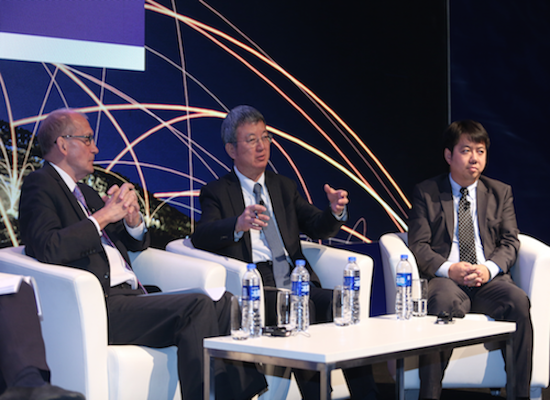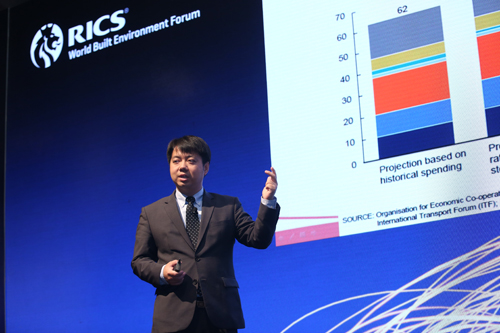Picture
Your Present Location: HOME> PictureRDCY addresses at 2017 World Built Environment Forum
The World Built Environment Forum Annual Summit, organized by Royal Institution of Chartered Surveyors(RICS), took place in Shanghai from March 27 to 28, 2017, bringing together stakeholders from all aspects of the sector to explore common issue on the built environment, and to build a basis for collaboration between disciplines. Over 700 international leading figures from across the built environment sectors attended the Forum.

The World Built Environment Forum Annual Summit took place in Shanghai.
Zhu Min, Former IMF Vice President and President of National Institute of Finance at Tsinghua University, issued a stark warning about levels of corporate debt in Asia. While corporates in the developed markets had been deleveraging, in emerging markets a combination of increased debt levels and low revenue generation raised the prospect of a financial crisis, he said.

Wang Wen delivers an opening keynote speech at the Summit.
Wang Wen, the Executive Dean of Chongyang Institute for Financial Studies at Renmin University of China (RDCY), attended the Annual Summit and delivered an opening keynote speech on the theme of “The Future of Green Infrastructure Construction under the Background of OBOR”.
In his keynote address, Wang Wen called on the built environment sectors to rise to the challenge of green financing and green infrastructure. He noted that China has already taken steps towards this, with the G20 Hangzhou Summit including green financing on the agenda for the first time.
As the Chinese saying goes, “To create wealth—first build a road”. Wang Wen stressed that GDP growth from infrastructure investment offsets the increased debt from construction spending. Across Asia, Wang identified electricity generation and transport as the most significant infrastructure gaps, when compared to Germany, Japan and the US.
He emphasized that China-proposed “Belt and Road Initiative” is essential to propelling the next stage of not only China’s but global economic growth. In just three short years following its announcement in 2013, Chinese companies had undertaken 38 large-scale transportation infrastructure projects across 26 countries, delivering 8445km of high-speed rail and 3700km of other rail lines by June 2016. In the same period, China had constructed 17 hydropower projects abroad, with a total capacity of almost 10 million kilowatts.
Wang noted that construction on this scale requires a remarkable degree of coordination, both within and across borders. He said large infrastructure projects often take years, if not decades, to produce returns. This generally is significantly longer than the investment horizon for a private organization, so governments must play a leading role.
Wang also emphasized the importance of evaluating risks when evaluating an infrastructure project’s financial viability. He highlighted four points In particular: uncertainties in estimating and realizing the return on investment, geopolitical threats including political instability, conflicting legal requirements across different jurisdictions, and environmental risks.
With these factors in mind, Wang called for the built environment sectors to make greater use of green financial tools, invest more in green infrastructure, and support multilateral cooperation on green infrastructure.
Key Words: RICS; environment forum; OBOR; Wang Wen























































































 京公网安备 11010802037854号
京公网安备 11010802037854号





